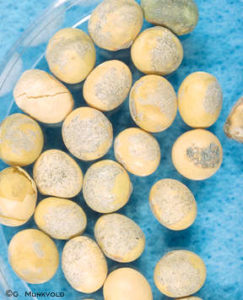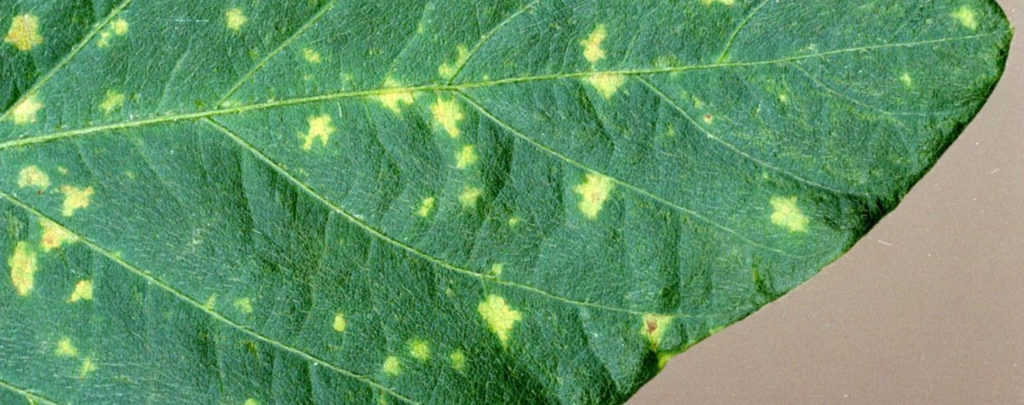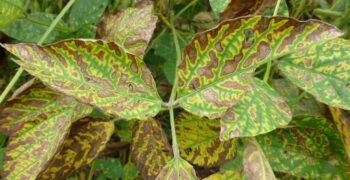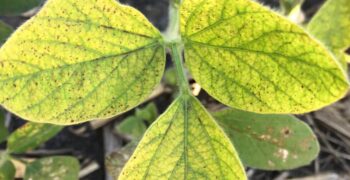Background:
Downy mildew is caused by the water mold pathogen peronospora manshurica that causes little yield loss. Symptoms will start to appear in late reproductive and vegetative growth stages, usually mid June to mid October. Lesions develop on the upper side of the leaf, they are often small, light green spots that can enlarge and turn a bright yellow. As the lesions age they will turn brown and be irregularly shaped. On the underside of the leaf, greyish-tan fuzzy growths will form, distinguishing it from other diseases. Younger leaves are more susceptible than older leaves. Infected plants pods may not show any external symptoms but internally the seed can become covered in a fluffy whitish coating, that contains spores and is easily rubbed off. Seeds can also appear to be lighter and smaller compared to normal seeds, affecting seed quality. Wet and humid conditions make this disease thrive when present. The pathogen can survive in leaves and on the seed surface as spores.
 Scouting:
Scouting:
Scouting for downy mildew should be done from mid june to mid october, as the disease is prevalent during vegetative through late reproductive growth stages. Look for lesions that are on the upper side of the leaf to be small spots that are light green, eventually they will turn a bright yellow, then brown. Underneath the leaf, fuzzy greyish-tan growths form and infected seed within the pod will have a white, fuzzy appearance.
Management:
- Rotating crops for at least 1-year will help breakup the disease cycle
- Tillage can help bury infected residue and reduce the chances of infection for the following growing season.
- Plant resistant varieties.



